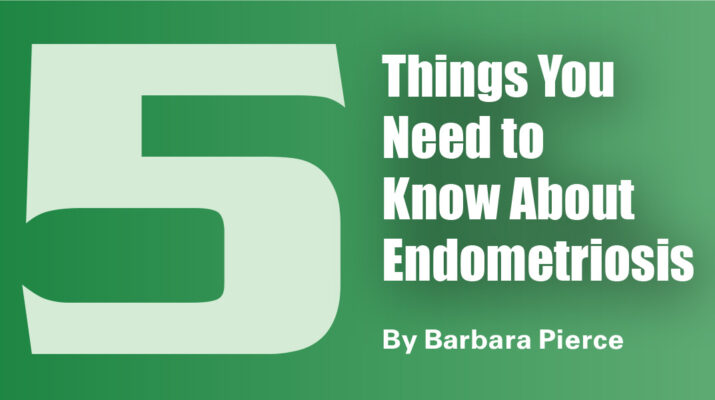By Barbara Pierce

You may have heard of endometriosis, but you may not know much about this chronic condition that severely impacts the lives of many women in their reproductive years.
We asked physician Srinivas Ketharaju, specialist in obstetrics and gynecology at Bassett Healthcare Network, to help us better understand this condition.
1. What is it?
“Endometriosis is a condition in which tissue, similar to the lining inside the uterus, is found outside the uterus. There it induces a chronic inflammatory reaction that may result in scar tissue,” said Ketharaju. “It is primarily found on the pelvic peritoneum [the membrane that lines the pelvic cavity and covers the pelvic organs], on the ovaries, in the recto-vaginal septum (the area between the vagina and anus), on the bladder, and bowel.”
Symptoms include painful periods, painful ovulation, pain during or after sexual intercourse, heavy bleeding, chronic pelvic pain, fatigue and infertility. The severity of these symptoms definitely impacts one’s general physical, mental and social well-being.
Other symptoms, in connection with menstruation, may include diarrhea or constipation, abdominal bloating, heavy or irregular bleeding, fatigue and symptoms like a urinary tract infection, he added.
“Endometriosis affects an estimated 1 in 10 women during their reproductive years,” he said.
2. How serious is it?
It is very serious as it impacts not only patients, but their families, jobs and societies.
“This condition results in a substantial burden to these women and society at large,” said Ketharaju.
The financial burden alone is huge: women with endometriosis spend on average over three times the amount on healthcare than those without it, the Bassett doctor said. Direct costs of endometriosis can include inpatient and outpatient treatment, surgery and prescription medication. Indirect costs include days off work, lost and reduced quality of work.
The physical pain caused by endometriosis can be crippling, as are the emotional consequences.
Sadly, 30% to 50% of women with endometriosis are infertile; they cannot get pregnant, according to the National Institutes of Health. And the resulting infertility impacts them emotionally and physically.
“I had endometriosis,” said 75-year-old Dee Hardin of Venice, Florida. “I laid on the floor and cried, the pain was so bad. I didn’t have it every month with cramps, just sometimes. The doctor said it was all in my head! It took years to figure out what was wrong. I had a hysterectomy and that resolved it. I was never able to have babies and that still makes me so sad.”
3. Is it difficult to diagnose?
“Unfortunately, diagnosis of endometriosis remains a challenge for many reasons,” said Ketharaju. “Studies show that it takes about seven to eight years to diagnose this disorder, especially when symptoms start at a young age.”
‘Diagnosis is a challenge for several reasons as there is a general lack of awareness by both women and health care providers, due to a ‘normalization’ of symptoms, which can result in a significant delay in diagnosis and treatment. Also, there is a lack of distinctive symptoms features of the disease. There is no accurate noninvasive diagnostic test.”
Diagnosis is a challenge for clinicians, especially general practitioners, because of the variety of symptoms. This is especially true for adolescents, he added. Medical professionals generally lack awareness of endometriosis in adolescents. Also, the disease may be subtle and different during laparoscopy. A laparoscopy for endometriosis is a minimally invasive surgery using a small camera to diagnose and surgically remove endometriosis tissue.
4. Are there any options for treatment?
“Although endometriosis can be treated effectively with drugs, most treatments are not suitable for long-term use due to side effects,” he said. “Excision surgery can be effective in removing endometriosis lesions and scar tissue, but success rates are dependent on the extent of disease and the surgeon’s skills. Hysterectomy, with surgical removal of all the disease at the same time, may relieve symptoms, but may not be a definitive cure either. Removal of the ovaries at the same time as a hysterectomy is performed increases the chances of pain relief but also results in an immediate menopause. Pelvic floor physical therapy is being recognized as a crucial component of treating some of the long-term effects of endometriosis.”
5. Is there anything else about endometriosis that people don’t generally know?
• Women have a higher risk of developing endometriosis if their mother or sister(s) are also affected.
• Women with endometriosis are at a slightly higher risk of developing ovarian cancer.
• High rates of mental health problems are noted in women with endometriosis.
• Research for endometriosis is severely underfunded
If you experience chronic pelvic pain, painful sex, infertility, fatigue, pain before or during periods, you may have endometriosis. If you often cancel plans and struggle to carry out day-to-day activities during your menstrual cycle, you may have endometriosis. Keep a detailed log of your symptoms and present them to your health care professional. While there’s no cure for endometriosis, there is treatment to decrease your symptoms.

